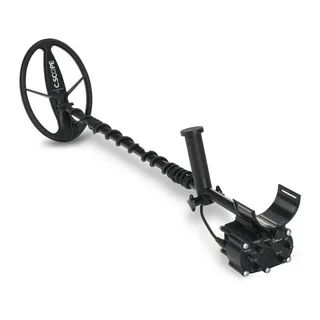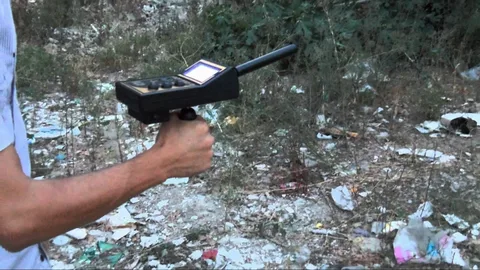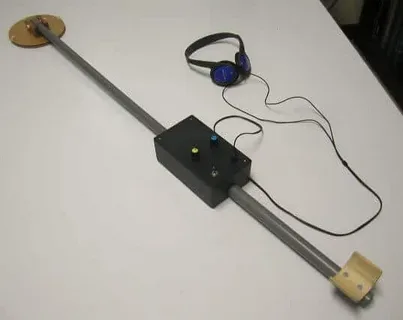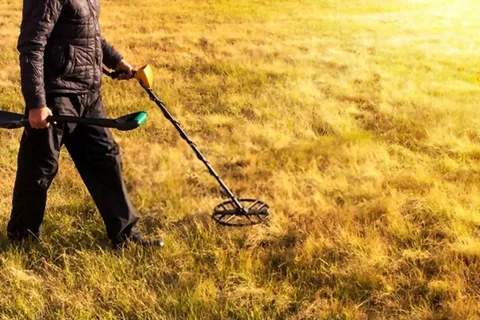Placer mining, a method of extracting minerals from riverbeds and other shallow deposits, has been a common practice for centuries. However, the environmental impact of placer mining on local ecosystems has raised significant concerns in recent years. As mining activities disturb the natural landscape and release harmful chemicals into the environment, the delicate balance of local ecosystems is disrupted. In this paper, we will explore the environmental impact of placer mining on local ecosystems, examining the potential effects on water quality, wildlife habitats, and overall ecological health. Through this exploration, we hope to shed light on the importance of sustainable mining practices and the preservation of natural ecosystems.
Placer mining, a method of extracting minerals from stream and riverbeds, has been known to have significant environmental impacts on the local ecosystems. The use of heavy machinery and equipment can disturb the natural balance of the rivers and surrounding habitats, leading to erosion, sedimentation, and the disruption of aquatic ecosystems. Chemicals such as mercury and cyanide used in the extraction process can also contaminate water sources, posing a threat to both wildlife and human health. Furthermore, the physical disturbance caused by placer mining can lead to the destruction of important habitats for plant and animal species, affecting biodiversity in the area. It is important for environmental researchers and policymakers to study and understand these impacts in order to develop sustainable mining practices and minimize the negative effects on local ecosystems.
The History of Placer Mining: A Rich Legacy

The History of Placer Mining: A Rich Legacy delves into the history and development of placer mining, which is the extraction of minerals, such as gold and silver, from alluvial deposits. The book explores the significance of placer mining in shaping the landscapes and economies of various regions. It also discusses the technological innovations and environmental impacts associated with this mining method. Readers can gain insight into the challenges and successes of early placer miners, as well as the enduring legacy of this industry.
Techniques and Tools for Placer Mining Success

Techniques and tools for placer mining success include using a gold pan, sluice box, rocker box, and suction dredge. These tools are essential for separating gold from sediment and are widely used in placer mining operations.
Other techniques for success in placer mining include prospecting and sampling to locate areas with high gold concentrations, using metal detectors to locate gold nuggets, and employing proper panning and sluicing techniques to maximize gold recovery. Additionally, understanding local geology and hydrology can also help in identifying potential gold-bearing areas.
It is important to note that the use of heavy machinery and chemicals should be approached with caution and in compliance with regulations to minimize environmental impact.Overall, a combination of the right tools and techniques, along with a solid understanding of the geological and environmental factors at play, is crucial for success in placer mining.
Environmental Impact of Placer Mining Operations

Placer mining operations can have a significant environmental impact. The process of extracting minerals from river beds and streams can cause erosion, sedimentation, and changes in water quality. This can disrupt local ecosystems and harm wildlife populations. Additionally, the use of heavy machinery and chemicals in placer mining can lead to habitat destruction and pollution. It is important for placer mining operations to be conducted with careful consideration for environmental impacts and for regulations to be in place to mitigate these effects.
Prospecting for Gold: The Art of Placer Mining
See also: gold mining and processing

Prospecting for Gold: The Art of Placer Mining is a comprehensive guide to the techniques and methods used in the search for gold in placer deposits. The book covers topics such as understanding the geology of placer deposits, identifying potential gold-bearing areas, and utilizing various tools and equipment for prospecting and mining. It also provides advice on how to sample and test for gold, and how to effectively recover and process the precious metal once it has been found. Written by experienced prospectors, this book offers valuable insights and practical tips for anyone interested in pursuing the art of placer mining.
Navigating Regulations: Placer Mining Laws and Permits
Navigating regulations for placer mining involves understanding the laws and obtaining permits that govern such activities. In the United States, placer mining laws are usually regulated by federal and state authorities. The laws typically define the rights and responsibilities of miners, including environmental protection, land use, and the extraction process. To engage in placer mining, individuals or companies must obtain permits and adhere to specific regulations regarding land use, water usage, and environmental protection. It is important to thoroughly research and understand the regulations before engaging in any placer mining activities to avoid potential legal issues.
The Thrill of the Hunt: Placer Mining Adventures
The Thrill of the Hunt: Placer Mining Adventures is a company that offers guided placer mining expeditions for individuals and groups. Based in the heart of the gold country in California, they provide a unique and educational experience for those interested in learning about gold mining and trying their hand at panning for gold. The company’s knowledgeable guides lead participants to prime gold-bearing streams, where they can learn the art of placer mining and potentially find their own gold nuggets. The Thrill of the Hunt creates a fun and authentic gold rush experience for adventurers of all ages. Whether you’re a curious novice or a seasoned prospector, The Thrill of the Hunt provides a memorable and exciting opportunity to explore the world of placer mining.
Placer Mining: Finding Fortune in the Stream Beds
Placer mining involves the extraction of valuable minerals or metals from stream beds and other sediments. This method of mining is typically used to recover gold, silver, and other precious metals. The process typically involves digging, sifting, and washing sediment to separate the valuable materials from the surrounding gravel and sand. Placer mining has a long history and has been a significant source of wealth for many people throughout the world. Today, modern mining techniques and equipment have made the process more efficient, but it still relies on the same basic principles of separating valuable materials from sediment.
Pros and Cons of Placer Mining: Balancing the Scales
Placer mining, a type of mining where valuable minerals are extracted from deposits of sand and gravel, has both pros and cons.
Pros:
1. Low initial cost: Placer mining typically requires less initial investment compared to other forms of mining, making it more accessible to small-scale miners.
2. Minimal environmental impact: Compared to other methods like open-pit mining, placer mining generally has a lower environmental impact as it does not require extensive excavation or deforestation.
3. Can be sustainable: When practiced responsibly, placer mining can be sustainable, especially if reclamation and restoration efforts are made to minimize long-term environmental damage.
Cons:
1. Environmental degradation: If not properly regulated and managed, placer mining can result in significant environmental degradation, particularly through the disruption and pollution of waterways.
2. Habitat destruction: Placer mining can disrupt and destroy the habitats of wildlife, particularly in river and stream ecosystems where the mining takes place.
3. Potential for social conflicts: In some cases, placer mining can lead to conflicts with local communities and indigenous groups over land use and resource extraction rights.
Balancing the pros and cons of placer mining requires careful consideration of environmental, social, and economic factors to ensure that mining activities are carried out in a sustainable and responsible manner.
The Modern Age of Placer Mining: Technology and Innovation
The modern age of placer mining is marked by the use of advanced technology and innovative methods to extract gold and other precious minerals from alluvial deposits. This includes the use of hydraulic mining, dredging, and the use of earthmoving equipment to efficiently separate gold particles from sand and gravel. Additionally, advancements in exploration techniques such as satellite imaging and deep-sea exploration have allowed miners to locate new placer deposits in remote and challenging terrains. Overall, the modern age of placer mining has been characterized by a focus on efficiency, environmental sustainability, and the development of new techniques and technologies to increase yields and minimize environmental impact.
Preserving the Past: The Importance of Historic Placer Mining Sites
Preserving the Past: The Importance of Historic Placer Mining Sites focuses on the significance of protecting and maintaining historic placer mining sites. These sites serve as a valuable link to our past and provide important insights into the history of mining and the impact it has had on local communities and the environment. Preserving these sites allows for the interpretation and understanding of past mining practices and their significance in shaping regional development. It also helps to safeguard cultural heritage and maintain a connection to the stories and experiences of the people who worked in these mines. Furthermore, preserving historic placer mining sites provides opportunities for education and interpretation, allowing future generations to learn from and appreciate the legacy of mining in their region. Overall, the importance of preserving historic placer mining sites lies in their ability to preserve and share the rich history and cultural heritage of these important sites.










